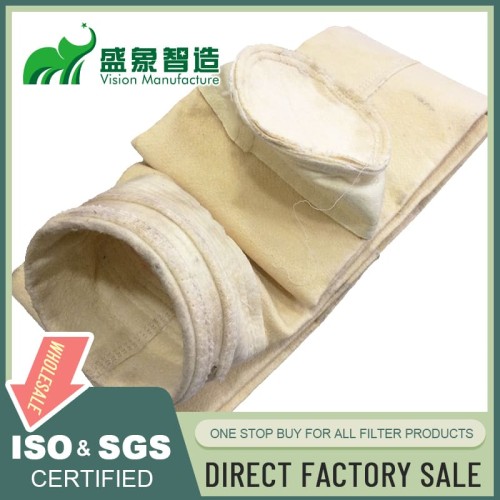
Mastering Dust Collector Bag Cleaning: Optimizing Performance and Longevity
I. Introduction
Maintaining dust collector bags is not just a routine task—it's a critical maintenance operation that significantly impacts the efficiency and longevity of filtration systems. Clean dust collector bags ensure optimal airflow and system performance, directly affecting the operational costs and environmental compliance of industrial facilities. This guide provides an overview of various cleaning methods and their importance in maintaining dust collector systems.
II. Understanding Dust Collector Bags
Dust collector bags are essential components in industrial air filtration systems, designed to capture and contain particulate matter from air streams:
- Types of Dust Collector Bags: Include pulse-jet, reverse air, and shaker bags.
- Materials Used: Commonly made from polyester, polypropylene, PTFE, and fiberglass, each offering different levels of filtration efficiency and resistance to environmental factors.
- Dust Accumulation: Dust particles build up on the surface of the bags, forming a layer that can either enhance or impede filtration efficiency.
III. Signs That Bags Need Cleaning
Recognizing when to clean dust collector bags is crucial for maintaining system performance:
- Decreased Airflow: Indicates that the bags are clogged with dust.
- Increased Pressure Drop: Occurs when dust buildup restricts air flow through the bags.
- Visible Dust Emissions: Suggest leaks or insufficient filtration.
- Reduced Collection Efficiency: Directly impacts product quality and workplace safety.
IV. Cleaning Methods for Dust Collector Bags
Various methods are employed to clean dust collector bags, each suitable for different types of systems:
- Pulse-Jet Cleaning: Uses short, high-pressure bursts of air to dislodge dust from the bags.
- Reverse Air Cleaning: Involves reversing the airflow to gently remove dust.
- Shaker Mechanism Cleaning: Employs mechanical vibrations to shake off dust.
- Manual Cleaning Techniques: Includes brushing or gently vacuuming the bags.
V. Preparing for the Cleaning Process
Proper preparation is essential for safe and effective cleaning:
- Safety Precautions: Include wearing appropriate personal protective equipment.
- Necessary Tools and Equipment: Ensure all tools required for cleaning are at hand.
- System Shutdown Procedures: Follow proper shutdown procedures to safely clean the system.
VI. Step-by-Step Cleaning Process
A systematic approach ensures thorough cleaning and inspection of dust collector bags:
- Accessing the Filter Bags: Open the dust collector housing following safety protocols.
- Inspection Before Cleaning: Check for any damage or wear that might affect performance.
- Implementing the Chosen Cleaning Method: Apply the appropriate cleaning technique based on the bag type and condition.
- Post-Cleaning Inspection: Ensure that the bags are intact and properly seated to prevent leaks.
VII. Optimizing Cleaning Frequency
Determining the right cleaning frequency involves several factors:
- Factors Affecting Cleaning Intervals: Include the type of dust, volume of airflow, and environmental conditions.
- Monitoring System Performance: Helps in scheduling cleanings based on actual need rather than a fixed schedule.
- Balancing Cleaning and Wear: Frequent cleaning can shorten the lifespan of bags, so balance is crucial.
VIII. Maintenance Best Practices
Regular maintenance extends the life of dust collector bags and ensures system reliability:
- Regular Inspections: Check for signs of wear or damage.
- Proper Tensioning of Bags: Ensures optimal fit and function.
- Addressing Minor Damages Promptly: Repair or replace damaged bags to maintain system efficiency.
- Keeping Accurate Maintenance Records: Tracks the performance and maintenance history of the system.
IX. Troubleshooting Common Issues
Common issues that may arise after cleaning include:
- Dealing with Stubborn Dust Cake: Some dust types may require specialized cleaning methods.
- Addressing Uneven Cleaning: Adjust cleaning techniques to ensure all areas of the bag are reached.
- Handling Moisture Problems: Moisture can cause clogging and should be managed by adjusting system settings or using moisture-resistant bags.
X. When to Replace Instead of Clean
Sometimes, replacing bags is more cost-effective than cleaning:
- Signs of Irreparable Damage: Include holes, severe wear, or loss of filtration integrity.
- Cost-Benefit Analysis of Cleaning vs. Replacement: Consider the costs of frequent cleanings against the price of new bags.
- Selecting Replacement Bags: Choose bags that meet the specific needs of your system and operating conditions.
XI. Innovations in Dust Collector Bag Cleaning
Vision Filter is continuously innovating in the field of dust collector bag technology:
- Automated Cleaning Systems: Enhance cleaning efficiency and reduce downtime.
- Smart Monitoring for Optimal Cleaning Timing: Uses sensors to determine the best time for cleaning.
- Advanced Cleaning Solutions: Improve cleaning effectiveness and extend bag life.
XII. Environmental and Safety Considerations
Proper handling of dust and disposal of used bags is essential for environmental and workplace safety:
- Proper Disposal of Collected Dust: Follow environmental regulations for disposal.
- Minimizing Dust Exposure During Cleaning: Use techniques that contain dust during the cleaning process.
- Compliance with Air Quality Regulations: Ensure that your system meets all relevant emissions standards.
XIII. Conclusion
Regular and effective cleaning of dust collector bags is essential for maintaining the performance and longevity of air filtration systems. With the right knowledge, tools, and techniques, you can ensure that your system operates at peak efficiency, protecting both your machinery and the environment. For expert advice and advanced solutions, turn to Vision Filter, where we are dedicated to enhancing your operational efficiency through innovative filtration technology.
Leave a comment

